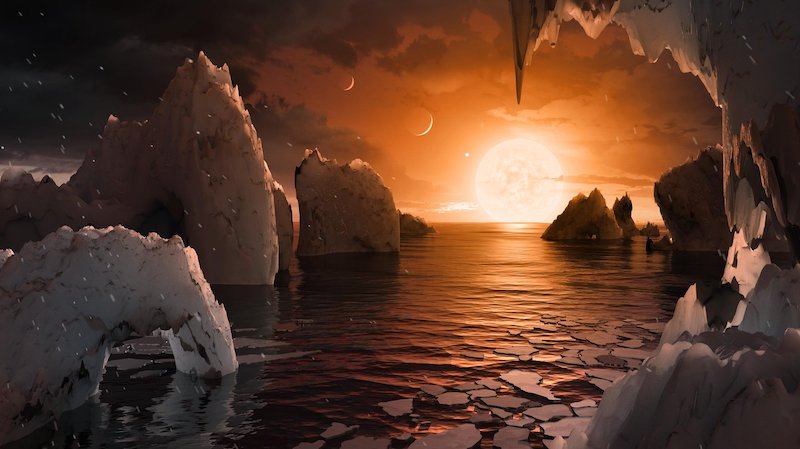Few questions ignite human imagination as powerfully as the possibility of life beyond Earth. For millennia, people have looked at the stars and wondered whether we are alone in the cosmos. From ancient myths of celestial beings to modern science driven by telescopes and probes, the search for extraterrestrial life is one of humanity’s greatest quests.
Today, this search has expanded into a vast and multidisciplinary field that blends astronomy, biology, chemistry, and philosophy. Scientists explore other worlds in our solar system, scan distant stars for habitable planets, and even consider the possibility of intelligent civilizations beyond our own. While no direct evidence of extraterrestrial life has yet been found, dozens of theories have emerged to explain how life might exist—or why it might not.
Here, we will explore fourteen of the most fascinating theories about life beyond Earth. Each one blends scientific possibility with cosmic wonder, reminding us that the universe is far bigger and more mysterious than we can fully grasp.
1. The Theory of Panspermia
One of the most intriguing theories is panspermia—the idea that life did not originate on Earth, but was seeded here from elsewhere in the cosmos. According to this theory, microbes or organic molecules may have traveled through space aboard asteroids, comets, or interstellar dust, eventually reaching Earth and sparking life.
There are variations of this idea. “Lithopanspermia” suggests microbes were ejected from one planet by impacts and later landed on another. “Directed panspermia” goes even further, suggesting that life might have been deliberately spread by an advanced civilization.
Support for panspermia comes from discoveries of hardy extremophiles on Earth—microbes that can survive in radiation, freezing, and vacuum. If life can endure such extremes, it’s conceivable it could travel across space.
2. The Rare Earth Hypothesis
While the universe is full of stars and planets, the Rare Earth Hypothesis argues that complex life may be exceedingly uncommon. It suggests that Earth’s conditions are unusually fine-tuned: our distance from the Sun, the presence of a large Moon to stabilize Earth’s tilt, plate tectonics to recycle carbon, and Jupiter’s gravitational shield that diverts comets.
This theory implies that while microbial life might be common, intelligent civilizations like ours could be rare or even unique. It challenges the optimism of those who expect the galaxy to be teeming with advanced societies.
3. The Drake Equation and Probabilistic Life
Astrophysicist Frank Drake developed the famous Drake Equation in 1961 as a way to estimate the number of intelligent civilizations in the Milky Way. The equation multiplies factors such as the rate of star formation, the number of planets per star, and the probability of life evolving.
While the exact numbers are unknown, the equation is valuable because it frames the problem scientifically. Depending on assumptions, it can suggest either a lonely galaxy or one full of civilizations. The Drake Equation highlights both the promise and uncertainty of the search for life.
4. The Fermi Paradox
Closely related to the Drake Equation is the Fermi Paradox, named after physicist Enrico Fermi. It asks: If intelligent life is common, then where is everybody?
Given the age of the galaxy and the potential for technological civilizations to spread, we might expect the universe to be buzzing with evidence of extraterrestrials. Yet, we see silence. This paradox has spawned countless possible explanations—from the idea that civilizations self-destruct, to the possibility that we are being deliberately avoided.
The Fermi Paradox is both haunting and inspiring, reminding us that the answer may be as strange as the question.
5. The Zoo Hypothesis
One proposed solution to the Fermi Paradox is the Zoo Hypothesis. This theory suggests that advanced extraterrestrial civilizations are aware of us but choose not to make contact, much like humans observing animals in a zoo.
Perhaps Earth is part of a “cosmic preserve,” with aliens deliberately keeping their distance until humanity reaches a certain level of maturity. While speculative, this theory plays with the idea that silence does not necessarily mean absence.
6. The Shadow Biosphere Theory
Could alien life already exist on Earth? The Shadow Biosphere Theory suggests that unfamiliar forms of life, based on different biochemistry, might coexist with known life but remain undetected because we don’t know how to recognize them.
Life on Earth is based on DNA, proteins, and water. But what if some forms of life use alternative molecules, perhaps silicon-based structures or arsenic instead of phosphorus? If so, alien life might be right under our noses, invisible to current methods of detection.
7. The Theory of Habitable Exoplanets
Thanks to missions like NASA’s Kepler and TESS, astronomers have discovered thousands of exoplanets—planets orbiting stars beyond our solar system. Many are in the “habitable zone,” where liquid water could exist.
The discovery of Earth-like planets such as Kepler-452b and Proxima Centauri b suggests that habitable worlds may be common. This fuels optimism that life beyond Earth may not only exist but thrive on distant worlds.
The habitable exoplanet theory is strengthened by the sheer scale of the universe—billions of stars, each with planets, mean the odds are stacked in favor of life.
8. The Ocean Worlds Hypothesis
Closer to home, several moons in our solar system may harbor liquid oceans beneath icy crusts. Europa (a moon of Jupiter), Enceladus (a moon of Saturn), and even Titan are believed to have vast subsurface oceans.
These “ocean worlds” could provide environments for microbial life, protected from harsh radiation by thick layers of ice. Enceladus has even been observed shooting water plumes into space, which contain organic molecules.
If life can exist in Earth’s deep oceans near hydrothermal vents, it could very well thrive in the hidden oceans of other worlds.
9. The Multiverse Theory
One of the most speculative yet profound ideas is the multiverse theory—the possibility that our universe is only one of many. If multiple universes exist, each with different physical laws, some might be far more hospitable to life.
In this scenario, life may not just exist beyond Earth or even beyond our galaxy—it may exist in entirely separate realms of reality. While the multiverse is still theoretical, it expands the imagination of where life could be found.
10. The Simulation Hypothesis
Could life beyond Earth be something even stranger than we imagine? The Simulation Hypothesis suggests that our entire universe might be a computer simulation created by an advanced intelligence. If this is true, then extraterrestrials could be the “programmers” or entities outside the simulation.
While this idea sounds like science fiction, some physicists and philosophers take it seriously. If the universe operates on information and code-like structures, perhaps our reality is artificial. In this framework, “life beyond Earth” could mean life beyond our simulated environment.
11. The Theory of Cosmic Pluralism
Cosmic Pluralism is an ancient theory with modern echoes. Dating back to the Greek philosopher Epicurus, it suggests that the universe is infinite and filled with countless worlds, many of them hosting life.
This idea resonates with modern astronomy, which reveals that stars and planets are not rare but abundant. Cosmic Pluralism holds that life is not a miracle confined to Earth but a natural outcome of cosmic processes repeated across the universe.
12. The Post-Biological Life Hypothesis
What if intelligent life exists, but it no longer takes biological form? Some scientists propose that advanced civilizations might evolve beyond biology, transferring consciousness into machines or digital systems.
If this is the case, extraterrestrials may not look like organic beings but rather artificial intelligences, robotic entities, or even distributed networks across the stars.
The post-biological hypothesis suggests that our search for life may need to expand beyond traditional biology to include technology as a form of alien existence.
13. The Self-Destruction Hypothesis
One sobering theory is that civilizations inevitably self-destruct before they can colonize the galaxy. This could be due to nuclear war, ecological collapse, or uncontrollable technology.
If this is true, then intelligent life may be common, but short-lived. Civilizations might flare up like cosmic sparks, only to extinguish themselves before achieving interstellar reach.
This theory resonates with humanity’s own challenges, serving as both a warning and a call to responsibility.
14. The Cosmic Silence Hypothesis
Finally, there is the unsettling possibility that we are alone—or at least alone for now. The Cosmic Silence Hypothesis suggests that despite the vastness of the universe, life may be extremely rare or Earth may be an exception.
Alternatively, life could be common but so spread out in space and time that civilizations rarely overlap. Perhaps intelligent life is destined to be lonely, separated by gulfs of distance and eras of time.
While sobering, cosmic silence also gives humanity a special role: as a rare voice of consciousness in a vast, quiet cosmos.
Conclusion
The search for life beyond Earth is not just a scientific endeavor—it is a profoundly human journey. Each theory, from panspermia to the zoo hypothesis, from habitable exoplanets to the multiverse, reflects both our scientific progress and our yearning to understand our place in the cosmos.
Whether life is abundant or rare, microbial or intelligent, biological or post-biological, the quest itself inspires us to look outward and inward. It challenges us to imagine, to explore, and to embrace the mystery of existence.
The universe is vast beyond comprehension. In that immensity, the question of life beyond Earth is not just about them—it is also about us: our hopes, fears, and our unending curiosity about what lies beyond the stars.






